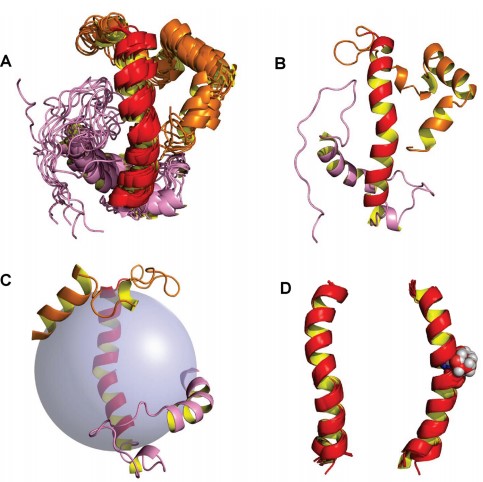Mempro™ Detergent-Free Voltage-Gated K+ Channel Accessory Protein (MinK) Production
Creative Biostructure has excellent experts good at comprehensive membrane protein production with years of experience. We can offer tailored Mempro™ voltage-gated K+ channel accessory protein (MinK) production services using detergent-free expression system.
MinK is a superfamily that only contains one family: voltage-gated K+ channel accessory protein (MinK) which includes potassium voltage-gated channel subfamily E member 1 and potassium voltage-gated channel subfamily E member 2. Potassium voltage-gated channel subfamily E member 1 is encoded by the KCNE1 gene and Potassium voltage-gated channel subfamily E member 2 is encoded by the KCNE2 gene in humans. KCNE proteins have two simple membrane-spanning regions, intracellular C-terminal and extracellular N-terminal. KCNE1 reduces the activation of KCNQ1 5-10 fold, improves its single conductance 4-fold, removes its inactivation, and amends the manner in which KCNQ1 is regulated by other small molecules, proteins and lipids.
 Figure 1. Structure of Potassium voltage-gated channel subfamily E member 1. (Genomics, 1993)
Figure 1. Structure of Potassium voltage-gated channel subfamily E member 1. (Genomics, 1993)
Creative Biostructure has rich professional experience in high-quality MinK production using detergent-free membrane protein expression system, we can perform several strategies for Mempro™ detergent-free protein production, including:
- Mempro™ Voltage-Gated K+ Channel Accessory Protein (MinK) Production Using Nanodiscs
Nanodiscs are soluble nanoscale phospholipid bilayers composed of membrane scaffold proteins (MSPs). In addition, nanodiscs are under the existence of phospholipids and MSPs, they are generally used for structural, enzymatic and biophysical researches.
- Mempro™ Voltage-Gated K+ Channel Accessory Protein (MinK) Production Using Amphipols
Amphipols are available tools for handling membrane proteins in detergent-free water solutions, and actually they are a new class of surfactants. Besides, amphipols enable to stabilize in aqueous solution with their inartificial nature state four well-authenticate integral membrane proteins.
- Mempro™ Voltage-Gated K+ Channel Accessory Protein (MinK) Production Using Poly (styrene-co-maleic acid) Lipid Particles (SMALPs)
SMALPs are disc-like structures containing a protein in a lipid bilayer, by using this approach, there is no need to sift special detergents, the speed and economy of protein extraction can be significantly improved.
These novel detergent-free approaches for MinK production can be obtained easily, and enabling more comprehensively structural and functional studies.
Creative Biostructure provides other various Mempro™ membrane protein production services. Please feel free to contact us for a detailed quote.
References:
Chevillard, C., Attali, B., Lesage, F., Fontes, M., Barhanin, J., Lazdunski, M., & Mattei, M. G. (1993). Localization of a potassium channel gene (KCNE1) to 21q22. 1-q22. 2 by in situ hybridization and somatic cell hybridization. Genomics, 15(1), 243-245.
lP, S. (1996). Coassembly of KvLQT1 and minK (IsK) proteins to form cardiac IKs potassium channel. Nature, 384.
Wheatley, M., Charlton, J., Jamshad, M., Routledge, S. J., Bailey, S., La-Borde, P. J., Dafforn, T. R. (2016). GPCR–styrene maleic acid lipid particles (GPCR–SMALPs): their nature and potential. Biochemical Society Transactions, 44(2), 619-623.
Jamshad, M., Lin, Y.-P., Knowles, T. J., Parslow, R. A., Harris, C., Wheatley, M., Overduin, M. (2011). Surfactant-free purification of membrane proteins with intact native membrane environment. Biochemical Society Transactions, 39(3), 813-818.